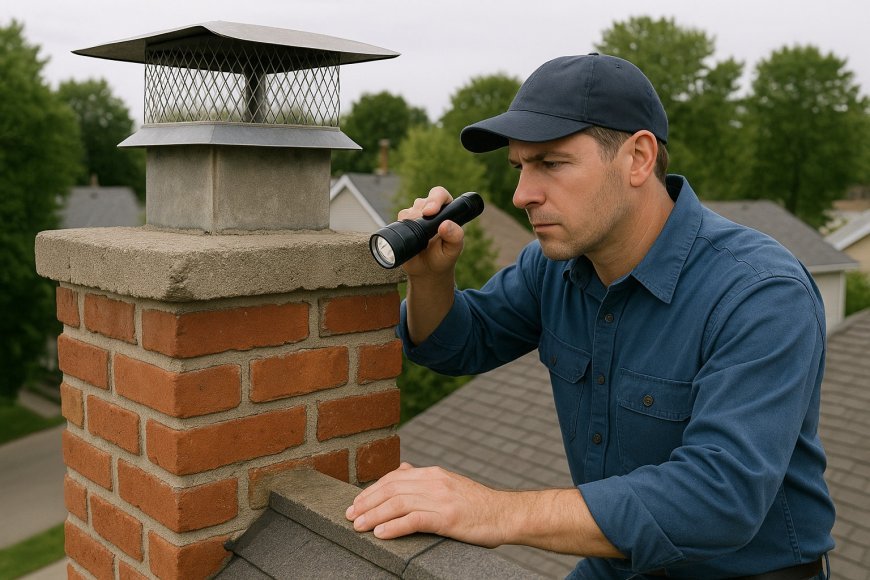Which Signs Indicate Immediate Chimney Inspection Need

Picture this: a cozy evening by the fireplace, the comforting crackle of burning wood, and the gentle warmth filling your living room. While fireplaces add charm and comfort, they depend on one critical component to work safely – the chimney. Over time, chimneys can develop issues that go unnoticed but pose serious risks. Recognizing the warning signals that demand a Chimney Inspection could mean the difference between a peaceful night and an emergency. Let’s walk through what to watch for, so you’ll know when to call for that vital Chimney Inspection before small problems become big headaches.
Unusual Smells: Your Nose Knows When It’s Time for Chimney Inspection
It’s amazing how often our sense of smell gives us the first hint that something isn’t quite right. If you’ve noticed a strong, musty, or smoky odor drifting from your fireplace—even when it hasn’t been used recently—that’s a clue you shouldn’t ignore. Odd smells can mean a buildup of creosote, animal nests, or even moisture trapped inside your chimney. All these issues can restrict airflow or create blockages, making your fireplace less efficient and more hazardous.
In fact, creosote, a sticky residue left by burning wood, is not just smelly—it’s highly flammable. If left unchecked, it can ignite and cause a chimney fire. On the other hand, damp, moldy smells might point to a moisture problem, which can damage the chimney liner and bricks over time. Any persistent or unusual chimney scent is a clear sign: it’s time to arrange a professional fireplace and chimney safety check as soon as possible.
Smoke Backing Up or Strange Noises: Two Big Red Flags for Chimney Inspection
Have you ever lit a fire only to have smoke pour back into your room instead of rising up the chimney? Or maybe you’ve heard scratching or flapping sounds coming from within the chimney walls? Both of these are classic signals that immediate attention is needed.
- Smoke backup can mean a blocked flue, a broken damper, or a structural issue in the chimney. It’s not just annoying—it can be dangerous, as it exposes your household to carbon monoxide, a colorless, odorless gas.
- Noises often indicate that birds, squirrels, or other critters have made themselves at home inside your chimney. Animals and their nests can block the airflow and even catch fire when you light your next blaze.
If you notice smoke entering your living space or hear unexpected sounds coming from the chimney, don’t delay. These problems usually don’t fix themselves and tend to get worse the longer they’re ignored. Call in an expert for a Chimney Inspection to get to the root of the problem and ensure your fireplace is safe to use.
Visible Cracks, Loose Bricks, or Water Stains: What You See Matters
Sometimes, your chimney may be sending out distress signals you can actually see. Take a few minutes to visually inspect the area around your fireplace and chimney, both inside and outside your home. Look for cracks in the chimney structure, crumbling mortar, loose bricks, or any signs of water stains on the walls or ceiling near your fireplace.
Water and chimneys are a bad combination. Moisture can seep in through cracks or damaged flashing, weakening the chimney's structure and leading to costly repairs if left unchecked. Water stains on your walls or ceiling usually mean leaks have already started. Likewise, physical damage like missing mortar or bricks can let dangerous gases seep into your home or leave your chimney unable to handle the heat of a fire.
Here’s a quick table to help you spot some of the most urgent warning signs:
| Warning Sign | What It Might Mean | Immediate Action |
|---|---|---|
| Strong, smoky, or musty smells | Creosote buildup, moisture, animal nests | Schedule a chimney cleaning and inspection |
| Smoke entering your room | Blocked flue, broken damper | Stop using fireplace, get professional inspection |
| Unusual noises (scratching, flapping) | Animals or debris in chimney | Have a specialist remove blockages |
| Cracks or missing bricks | Structural damage, potential leaks | Arrange repairs and thorough inspection |
| Water stains near fireplace | Chimney leak or flashing problem | Fix leaks and check chimney liner |
"A well-maintained chimney isn’t just a matter of comfort—it’s the foundation of a safe and happy home."
Difficulty Starting or Maintaining a Fire: Subtle Hints It’s Time for a Chimney Inspection
Not every sign of chimney trouble is dramatic. Sometimes, it’s the small changes that tell you something is off. If you’re struggling to start a fire or keep it going, or if the flames aren’t as strong as they used to be, your chimney could be crying for help.
A weak or slow-burning fire often means the airflow is restricted. This could be due to a partial blockage, a damper that isn’t opening fully, or a buildup of soot and debris inside the flue. Rather than keep fighting with your fireplace, take it as a sign that a professional needs to take a look. A thorough chimney inspection can identify airflow problems and get your fires burning bright again.
Conclusion: Don’t Wait for Danger—Stay Ahead with Regular Chimney Inspection
Your chimney does a lot of heavy lifting behind the scenes, keeping your home cozy and safe all season long. But when it starts showing signs of trouble—whether it’s odd smells, smoke indoors, strange noises, visible damage, or fires that just don’t seem right—it’s your cue to act fast. The sooner you schedule a chimney inspection, the easier (and often cheaper) it is to fix any problems. Think of it as a health check for your fireplace, helping you enjoy those cozy nights with complete peace of mind.
In the end, being alert to these warning signs and giving your chimney the attention it needs is one of the smartest moves you can make as a homeowner. Don’t wait for a small problem to become a major one—make Chimney Inspection a regular part of your home care routine!
Read More: Chimney Sweep
What's Your Reaction?




























































